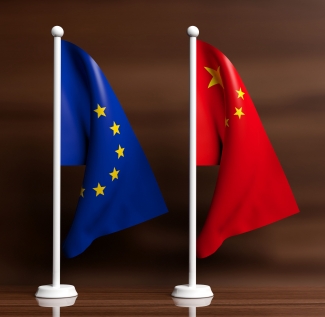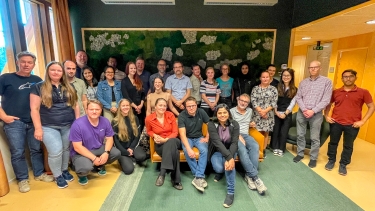New study assesses future Europe-China forest bioeconomy development

The EU and China are two of the three biggest economies and trading blocs in the world, and their economic and trade relations are increasingly interlinked. China’s role as an export destination for forest products made in the EU, as a potential source or destination of capital for developing the forest-based sector, and as Europe’s key partner in climate change mitigation has increased in importance, especially in the last decade.
A new study from the European Forest Institute provides the first systematic assessment of the potential challenges, possibilities for the future and policy implications for Europe-China forest-based bioeconomy development.
While a sustainable circular bioeconomy has been recognized and discussed in Europe, for example in the European Commission’s EU bioeconomy strategy in 2018, the bioeconomy is still a new concept in China.
China is by far the largest global producer and consumer country of concrete, steel, coal, paper and oil-based products like polyester fibre and plastic. A shift from a fossil fuel-based economy to a greener, more circular, and less carbon intensive economy is needed, if China is to succeed in its aim of making its economy climate neutral within the next 40 years (by 2060). Technologies, products, and supportive policies are needed to support these objectives in all economic frontiers.
Dialogue and cooperation on green development between the EU and China has deepened under the EU-China Comprehensive Strategic Partnership which embraced its 17th anniversary in 2020. In 2018, China and the European Commission signed a Memorandum of Understanding on Circular Economy Cooperation. Further cooperation within the area of bioeconomy could contribute to China’s sustainable development and provide important market opportunities for bioeconomy sectors in the EU in the coming decades.
Study coordinator Maarit Kallio said: “Our study is the first one to assess the state of and mutual opportunities in the forest bioeconomy area between China and the EU. For example, China-EU cooperation in bioeconomy would support global sustainability goals while providing economic opportunities for people both in rural and urban areas. China has carried out impressive investments into increasing its forest coverage and wood supply. And while it continues to do so, the country is very much relying on imported wood. The EU wood products exports to China could be part of the solution of making Chinese construction sector greener, as one example. That would also relieve the pressure of harvests increasing in the regions vulnerable to deforestation and illegal logging.”
More information
China-Europe Forest Bioeconomy: Assessment and Outlook. From Science to Policy 11. European Forest Institute.
Authors: Maarit Kallio, Xiaoqian Chen, Ragnar Jonsson, Janni Kunttu, Yijing Zhang, Anne Toppinen, Jianping Zhang, Jiancheng Chen, Nike Krajnc, Ben Cashore, Bo Yu, Chen Yong, Davide Pettenella
The study is published on 9 December and is freely downloadable.
This work and publication has been financed by EFI’s Multi-Donor Trust Fund for policy support, which is supported by the Governments of Austria, Czech Republic, Finland, Germany, Ireland, Italy, Lithuania, Norway, Spain and Sweden.
Photo: Rawf8/Adobestock


